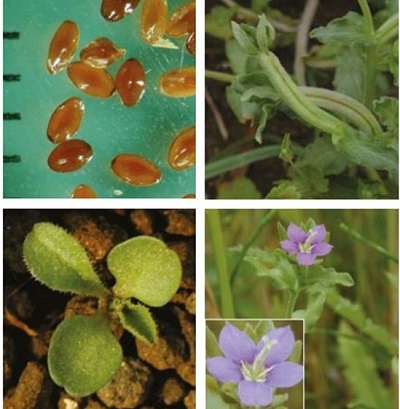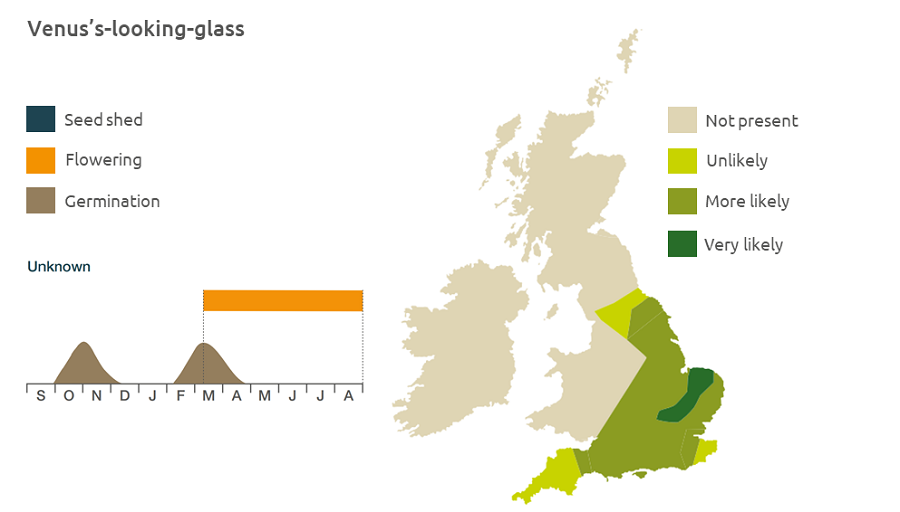- Home
- Knowledge library
- Distribution and biology of Venus’s-looking-glass weeds in the UK
Distribution and biology of Venus’s-looking-glass weeds in the UK
Venus’s-looking-glass is a lowland arable weed in England. Find out how to identify and control it.
Overview
Venus’s-looking-glass (Legousia hybrida) can germinate from autumn through to spring. It is insect-pollinated. It is rarely a problem in competitive crops but can be found in newly emerged crops.
- It has value to biodiversity
Description
It is an upright, roughly hairy annual dicotyledon, growing up to 30 cm tall. The leaves are wavy with short stalks. It has tubular pink flowers. The ovary starts to extend as the flower becomes fertile and looks like three touching cylinders.
Key features
Fruit: Only two of the three seed head ‘cylinders’ are visible from one side.

Location and life cycle

Geographic distribution
Venus’s-looking-glass is a lowland weed found in arable fields, or on disturbed soils such as motorway embankments.
Soil type
It prefers chalky soils and low nitrogen conditions.
Seed statistics
- Seed longevity: >5 years
- Seed weight: 0.335 mg
- Seeds/flower: 40
Management
It does not persist in winter cropping rotations and is readily controlled in early spring by cultivation.
For advice on herbicides, please speak with your agronomist or adviser.
When was this information last updated?
This page is based on content from the encyclopaedia of arable weeds publication. Since it was first released in 2008, the publication has been redesigned several times but not revised. However, it remains a good foundation for general information on the distribution and biology of weeds.

